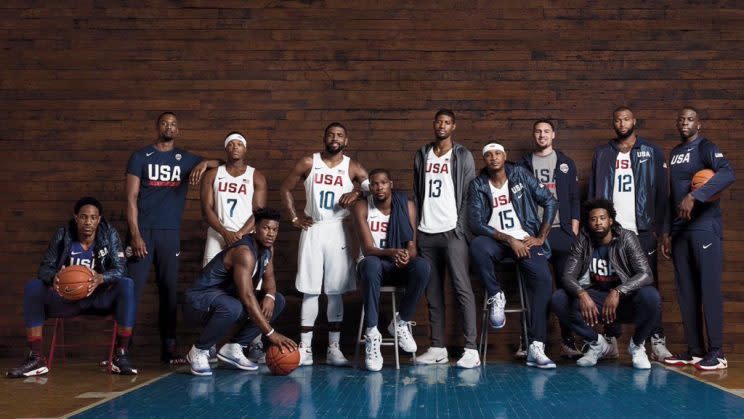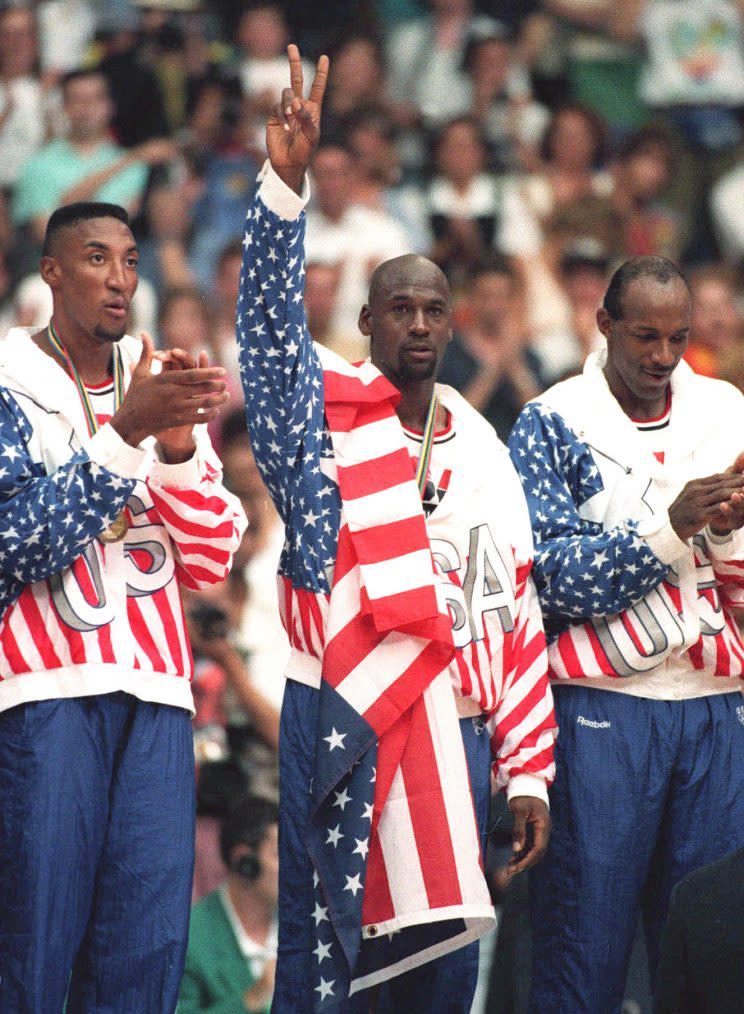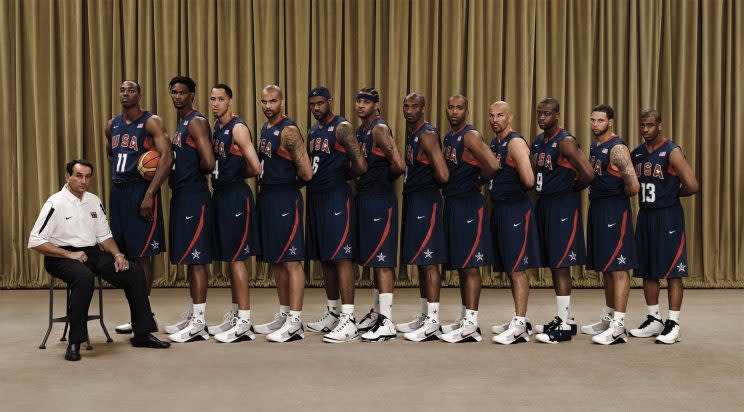Team USA remains fertile ground for game of brands

The official roster photo for the USA Basketball men’s national team, which is expected to win a third consecutive gold medal at the Summer Olympics in Rio de Janeiro, was unveiled Monday.
At first glance, the team portrait was noticeably non-traditional. Typically, players either line up in order of height, or they stand positioned together as a group. The 2016 team photo, which was not coincidentally first unveiled by Nike Basketball and the Jordan Brand social-media accounts, features Harrison Barnes, Kyle Lowry and Klay Thompson strategically placed at the back of the group.
Those three players have shoe endorsement deals with brands other than Nike, Team USA’s official outfitter and sponsor. Barnes and Lowry endorse adidas, while Thompson has his own signature shoe with China-based brand Anta.
At the forefront of the photo, Jimmy Butler and DeAndre Jordan are awkwardly crouched down, each strategically blocking the footwear of the non-Nike athletes.
Since NBA stars with massive athletic brand endorsement deals were allowed to compete in the Olympics in 1992, there have been a number of examples of branding agendas at work. Perhaps the most memorable logo maneuvering was in Barcelona, when Nike’s global icon, Michael Jordan, utilized the American flag to conceal the Reebok logos stitched onto Team USA’s official medal-stand warmup suit.

“Everyone agreed we would not deface the Reebok [logo] on the award uniform,” Jordan told media members after the ceremony. “The American flag cannot deface anything. That’s what we stand for. The American dream is standing up for what you believe in. I believed in it, and I stood up for it. If I offended anyone, that’s too bad.”
Jordan’s definition of the American dream understandably brought some heat at the time, but his dedication to Nike has been unwavering. The two have partnered together since Jordan entered the league in 1984, and he now earns over $100 million annually from his Jordan Brand subsidiary under Nike, thanks to a 5 percent royalty cut of the brand’s $2.2 billion in revenue.
Not only did that endorsement income help Jordan become the first former player to own an NBA team, but there’s also the likelihood that his Jumpman logo will soon be featured on the shoulder of the Charlotte Hornets’ uniforms when Nike takes over the NBA sponsorship at the beginning of the 2017-18 season.
Nike first aligned itself with USA Basketball in 2005 as the official outfitter and sponsor of the organization at all age levels. The brand has since provided uniforms and warmup apparel to all FIBA World Cup and Olympic men’s and women’s teams and made use of the platform to position its top endorsers on a global stage.
The Olympics have long served as an opportunity for Nike to unveil its newest innovations and technologies. This summer, Kevin Durant will be wearing his new KD9, while Paul George will be leading the newest edition of the Hyperdunk. Butler and Carmelo Anthony will be debuting the Air Jordan 31.
On the 1992, ’96, 2000 and ’04 U.S. Olympic rosters, when the men’s national team was first sponsored by Champion and later Reebok, only 70 percent of the players wore Nike.
In the 2008 and ’12 games, 96 percent of the Team USA men wore sneakers that fell under the Nike Inc. umbrella, including subsidiaries such as Jordan Brand, worn by Anthony, and Converse, worn by Dwyane Wade in 2008. The 2008 team photo featured players lined up in reverse order by height, allowing for coach Mike Krzyzewski, who oversees a Nike program at Duke, to block out the adidas sneakers worn by Dwight Howard, the lone non-Nike Inc. player on the team.

The three non-Nike players on this year’s team represent the highest total since Nike partnered with USA Basketball, but you wouldn’t know it from the official portrait. Even during something as seemingly unifying as the Olympics, the strategic logo placements and obstructions are just the latest chapter in the industry’s ongoing branding wars.



